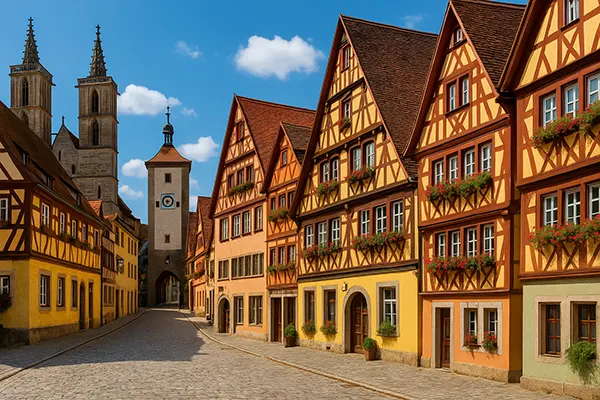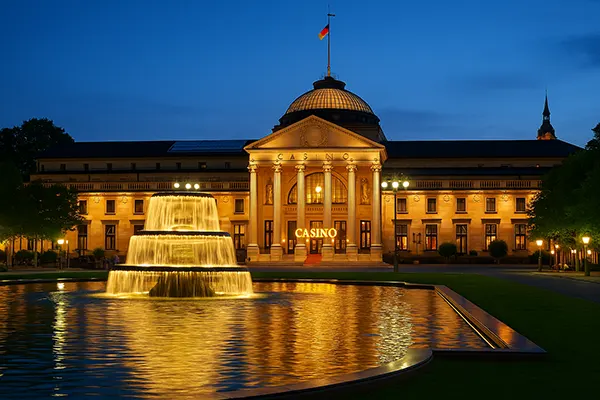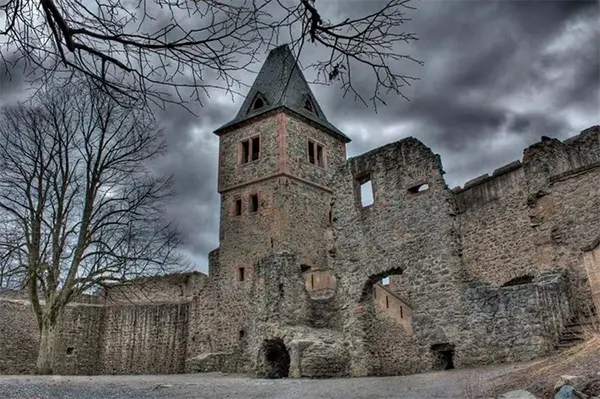
Best Architectural Routes for Tourists in Franconia
Franconia, a culturally rich region in northern Bavaria, has emerged as a must-visit destination for architecture enthusiasts. With tourism in smaller Bavarian towns increasing steadily post-pandemic, Franconia now welcomes a new wave of domestic and international travellers. From Romanesque abbeys to Gothic cathedrals and charming half-timbered houses, the region offers a layered journey through centuries of architectural evolution.
Romanesque and Gothic Trails in Franconia
One of the most compelling ways to explore Franconia is by following thematic routes focused on architectural styles. The Romanesque trail leads visitors through early medieval masterpieces such as Bamberg Cathedral and the Basilica of St. Kilian in Würzburg. These sites represent the austere and monumental essence of Romanesque design, featuring thick stone walls, rounded arches, and modest ornamentation.
Gothic architecture in Franconia flourished during the 13th to 15th centuries, and its legacy is visible in locations like St. Sebaldus Church in Nuremberg and St. Lorenz in the same city. These structures are known for their pointed arches, ribbed vaults, and expansive stained-glass windows that narrate biblical stories through vivid colour and detail.
The city of Rothenburg ob der Tauber serves as a perfect transition between Romanesque solidity and Gothic elegance. A stroll through its cobbled streets reveals structures that blend both styles harmoniously, making it a cornerstone of any architectural route.
Planning Tips and Map Resources
For efficient navigation, travellers are encouraged to use digital map platforms that offer architectural walking routes. Google Maps’ custom list feature allows you to pin landmarks and plan daily itineraries. Alternatively, the official BayernInfo portal provides printable PDF maps highlighting historical monuments and cycling routes connecting towns.
Tourist information centres in Bamberg, Nuremberg, and Würzburg now offer themed brochures as of 2025. These include historical background, opening times, and transport options. Booking guided tours through certified regional guides ensures a deeper understanding of each site’s significance and evolution.
It is advisable to travel by regional trains, which connect most heritage towns and offer affordable passes like the Bavaria Ticket. Car hire is also convenient, especially if you plan to explore smaller villages not served by regular public transport.
Timber-Framed Architecture and Heimatstil Lodging
Franconia is widely recognised for its fairy-tale half-timbered houses (Fachwerkhäuser), which dominate the skylines of towns like Miltenberg, Dinkelsbühl, and Kronach. These structures, with their exposed timber beams and colourful facades, often date back to the 15th and 16th centuries and remain well-preserved thanks to local conservation efforts.
The town of Forchheim is particularly known for its timber-framed Rathaus and medieval market square. In Bad Windsheim, the Franconian Open Air Museum offers a reconstructed village with authentic homes relocated from across the region, each representing a different architectural era and social class.
Accommodation in Heimatstil — a German regionalist style popular in the early 20th century — is increasingly sought-after. These traditional guesthouses often include carved wooden balconies, red-tiled roofs, and interiors decorated with rustic motifs. They offer a cosy and authentic stay that aligns with Franconia’s architectural character.
Top Guesthouses and Booking Advice
By 2025, many heritage guesthouses have adopted online booking systems via platforms such as Booking.com and Traum-Ferienwohnungen.de, where you can filter listings by style and heritage rating. Properties like Gasthaus zum Löwen in Iphofen or Hotel Wilder Mann in Aschaffenburg provide excellent examples of Heimatstil design merged with modern comfort.
Booking in advance is highly recommended, particularly during the summer and autumn months when local festivals attract high visitor volumes. Many properties now participate in the “Bayern Authentisch” programme, which certifies accommodation offering traditional Franconian experiences.
To immerse in the atmosphere fully, look for family-run inns that serve regional cuisine and include antique furnishings. These stays not only enhance the architectural journey but also support local economies and conservation efforts.

Where Architecture Meets Cuisine
Franconia’s charm lies in its ability to blend architectural discovery with culinary delight. In Bamberg, for example, visitors can admire the Romanesque-Gothic cathedral before enjoying a beer in one of the city’s traditional breweries like Schlenkerla, housed in historic buildings with vaulted cellars and wooden interiors.
In Würzburg, the Residenz Palace — a UNESCO World Heritage site — is surrounded by wine taverns (Heckenwirtschaften) where guests can sample Silvaner and Müller-Thurgau wines grown on the hills visible from the baroque gardens. Architecture here becomes the backdrop for regional gastronomy rooted in centuries-old traditions.
Even small towns like Iphofen and Volkach combine stunning half-timbered squares with seasonal markets and wine festivals. Many eateries operate in buildings that are several hundred years old, offering not only regional dishes like Franconian bratwurst and sauerbraten but also a genuine sense of place.
Recommended Spots for Food and Heritage
In Dinkelsbühl, Gasthaus zur Sonne offers a historic interior along with traditional Bavarian cuisine. Nuremberg’s Albrecht Dürer Stube near the artist’s former house provides regional meals inside a centuries-old home, adorned with original wood panelling and decorative beams.
The culinary offerings in Bad Kissingen include cafés set in Art Nouveau buildings, where visitors can enjoy local pastries and coffee in architecturally significant settings. Combining a meal with a visit to a nearby landmark allows for a richer and more memorable experience.
Tourists are encouraged to seek out eateries and markets held in old town centres and courtyards. Many of these venues, though modest in appearance, are housed in heritage-listed buildings, offering insight into local life as it has evolved over centuries.



